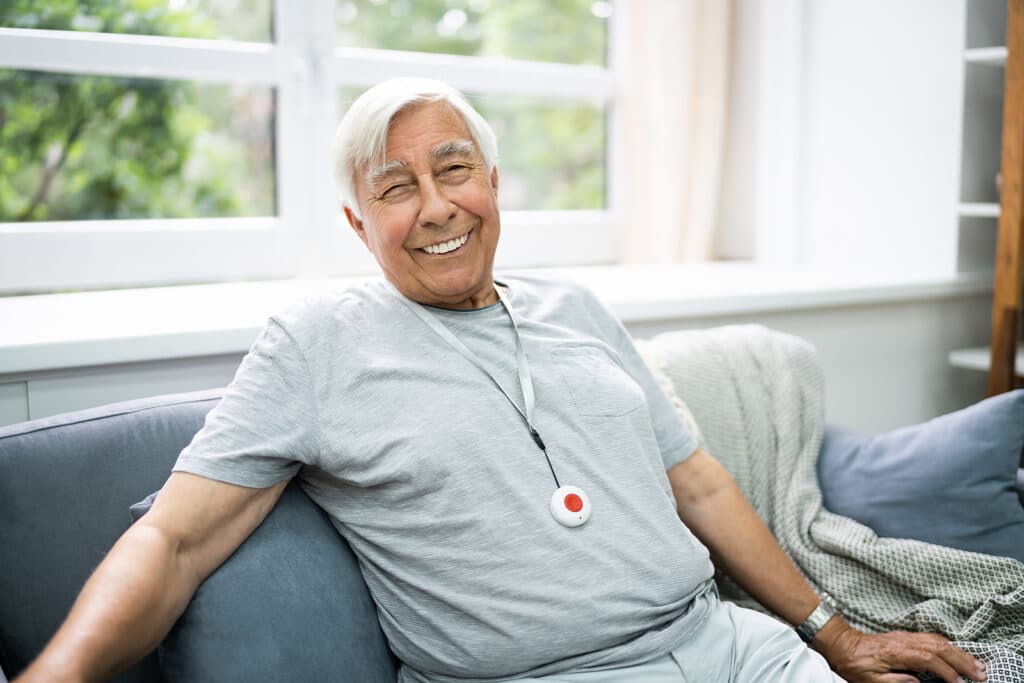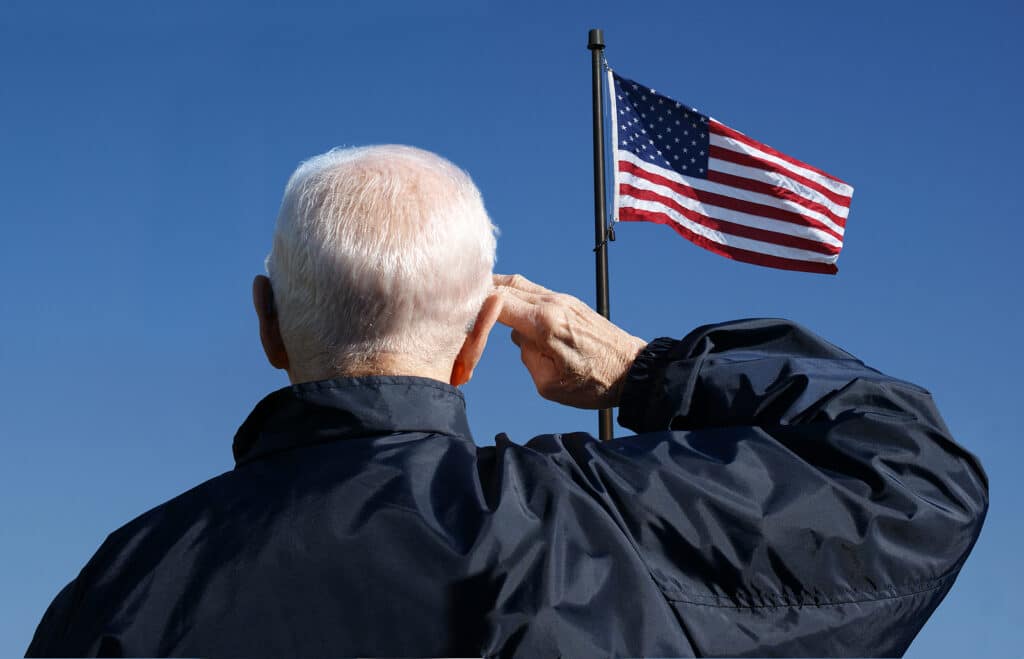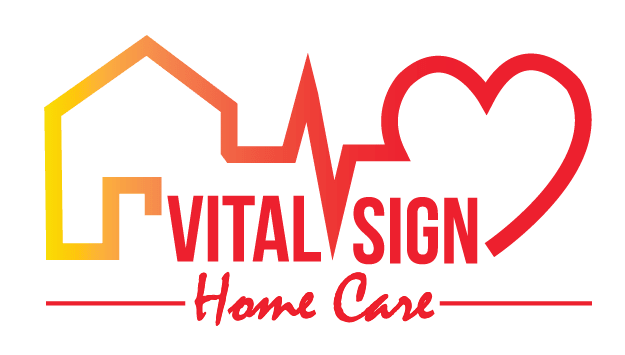Vital Sign Senior Home Care in Maryland. Veterans Care at Home.
Vital Sign Home Care provides private duty home care services for veteran seniors and their surviving spouses. Certain veterans may qualify for financial assistance with activities of daily living like eating, bathing, dressing, continence (using the toilet), mobility (transferring, walking), and grooming.
Personal Care Services Provided
Personal Care Services provide assistance with more intimate types of care. This includes all of the activities of daily living: (ADLs)
- Bathing, dressing, and grooming
- Oral Hygiene
- Ambulation
- Safety and fall prevention
- Feeding
- Medication reminders
- Toileting and incontinence care
- Transferring from bed to wheelchair
- Expertise with Memory loss, confusion, and forgetfulness
- Monitoring and reporting conditions and changes
Personal care services keep seniors in their own homes longer by preventing illness and the worsening of long-term medical conditions.
Help with Activities of Daily Living
You have questions and we have answers, contact us today and one of our Vital Sign Home Care staff members will contact you shortly.
Vital Sign Home Care provides exceptional Home Care for Veterans in Anne Arundel County, Baltimore City, Baltimore County, Carroll County, Harford County, Howard County Maryland.

How Do Maryland Veterans Get Help with this Program?
Here are two resources that assist veterans and their surviving spouses with VA Aid and Attendance Pension Benfefit information:
- Federal Website: https://www.va.gov/pension/aid-attendance-housebound/
- Maryland Department of Veterans Affairs: https://veterans.maryland.gov/faqs/
There are many eligible services offered through the VA – The below list is not all inclusive.
- Disability
- Compensation
- Health Care
- Education and training
- Non Service-Connected Pension
- Memorial Benefits
- Burial in a VA national cemetery
- Home loan and Housing Assistance
- Interest Rate Reduction
- Refinance Loans
- Aid and Attendance
- Veteran Affairs
- VA Life Insurance
What is the Veterans Aid and Attendance Pension?

The Veterans Benefits Administration, a branch of the VA, provides monthly payments to certain wartime veterans with financial need, and their survivors. This pension is available if you (the veteran) or a surviving spouse of a veteran, meet certain criteria.
The Aid and Attendance amount is available for those who need the “aid and attendance” of another person for their routine daily living activities on a long-term basis.
How Does a Veteran Qualify for Aid and Attendance?
A simple way to determine if you are eligible is to start with the three main qualifications or “must-haves” for the VA Pension with Aid and Attendance:
- Military: Are you a veteran or the surviving spouse of a veteran who served at least 90 days on active duty, at least one day during wartime, with an honorable or general discharge? (Persian Gulf War veterans must have two years of active duty or the full period for which they were called for active duty.)
- Medical: Do you have a non-service-connected medical condition causing you to need assistance with activities of daily living?
- Money: Do you have a net worth of, or less than, $130,773 (limit established by Congress 12.1.2020)? A primary residence and auto are not counted as part of net worth. Ongoing non-reimbursable medical and long-term care expenses may reduce your countable income.
Did you serve during one of the VA Defined War Periods?
- World War II: December 7, 1941-December 31, 1946
- Korean Conflict: June 27, 1950-January 31, 1955
- Vietnam Era: August 5, 1964-May 7, 1975 Veterans who served February 28, 1961-August 5, 1964, must have served “in country” (Vietnam).
- Persian Gulf War: August 2, 1990- date to be prescribed by Presidential Proclamation or law. Must have served active duty for two years or the full period of which the veteran was called for active duty.
We love hearing what others say about our medical and non-medical home care services. View our testimonials and find out why your family should use our services.
More About This Veterans Benefit
In 1952 Congress passed Title 38 of the United States Code authorizing certain benefits for veterans. One of these benefits is the Non-Service Connected Pension, with “Aid and Attendance.” It is also known as simply “Aid and Attendance” or “Veterans Aid and Attendance benefit” or “Aid and Attendance Pension” or “Improved Pension with Aid and Attendance.”
In March 1989, during President George H. W. Bush’s presidency, the Veterans Administration (VA) was elevated to a cabinet-level executive department. The Veterans Administration was then renamed the Department of Veterans Affairs, and continued to be known as VA. Today the VA is comprised of three basic branches: the Veterans Health Administration (VHA), the Veterans Benefits Administration and the National Cemetery Administration (NCA).
How To Get Started with Home Care for Veterans
A Person-Centered Care Process
Each agency is unique in its own way. At Vital Sign Home Care, we understand how important it is to plan for care that is person-centered, or in other words, focused on the client’s needs first. As soon as we receive an inquiry about our services, we begin our assessment process. This process involves reviewing personal and medical information that is unique to your loved one’s needs.
This process begins with a:
1. Phone Interview
Our admission coordinator will schedule a time to conduct an initial phone interview to gather as much information about your loved one’s needs as well as the family’s needs. Once this information is gathered, we will then schedule an appointment to meet with one of our RN coordinators to begin the next step.
2. Care Plan Meeting
Our care plan meetings are designed to assess your loved one’s home environment and recommend and plan care based on the information provided. After the care plan meeting, a person-centered plan is developed with the family’s permission. No plan is implemented until the family approves the plan.
3. Caregiver Selection
Our RN coordinator along with our admissions coordinators work together to select caregivers based on the needs and interests of the client and family. This process can be tedious but through. We take into consideration various factors to select the proper caregiver for your loved one. Experience as well as personality is taken into consideration during the selection process with a home visit arranged before the final decision is made.
4. Care Monitoring
Caregivers are required to document (care notes) daily about the day-to-day activities as well as the care provided. Care notes remain on-site at the homes. Our RN monitors the caregivers by doing unscheduled visits.
Our person-centered care process allows our RN coordinators to work closely with our admissions coordinators to select caregivers based on the needs and interests of the client and family. Get Started today!
